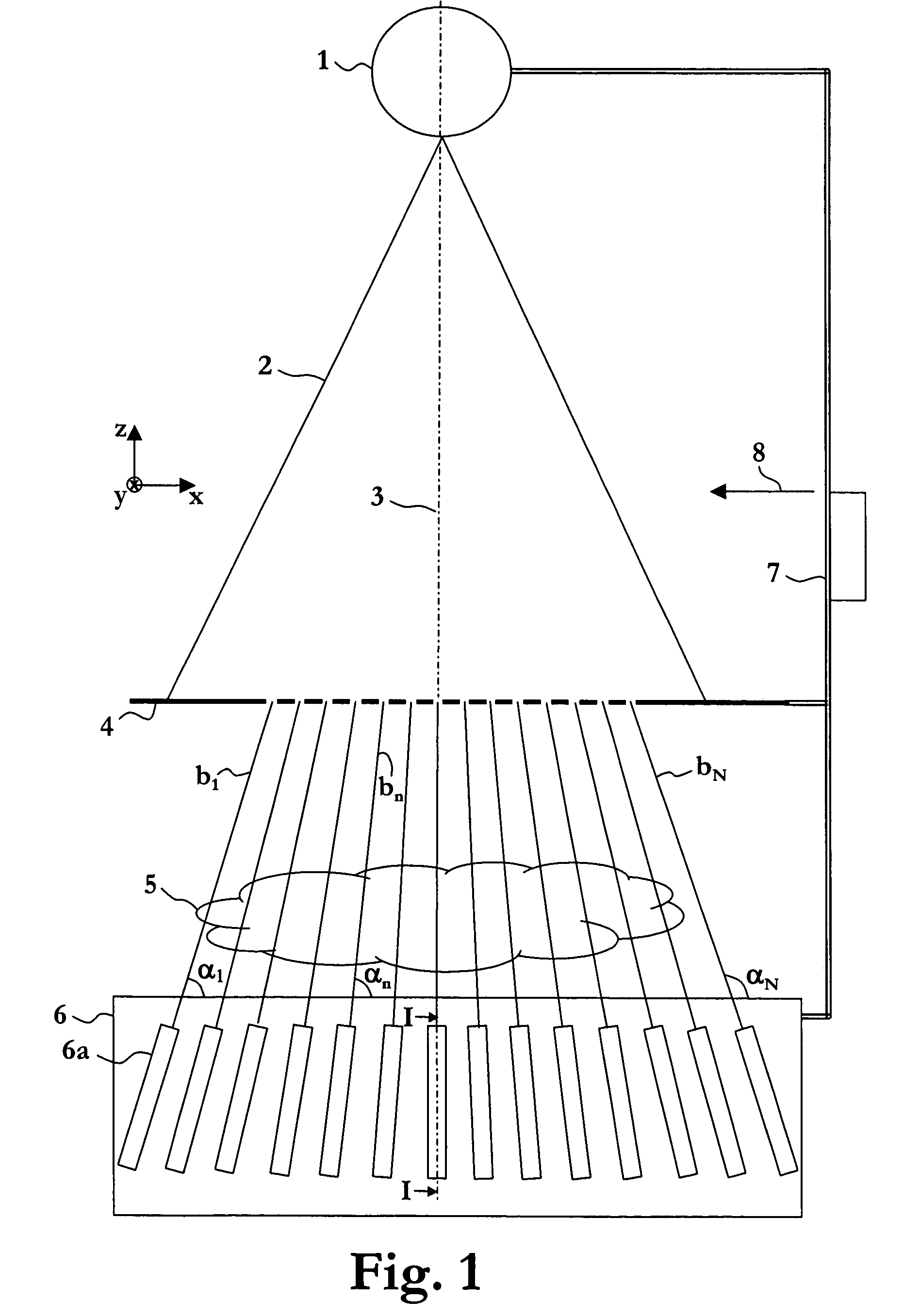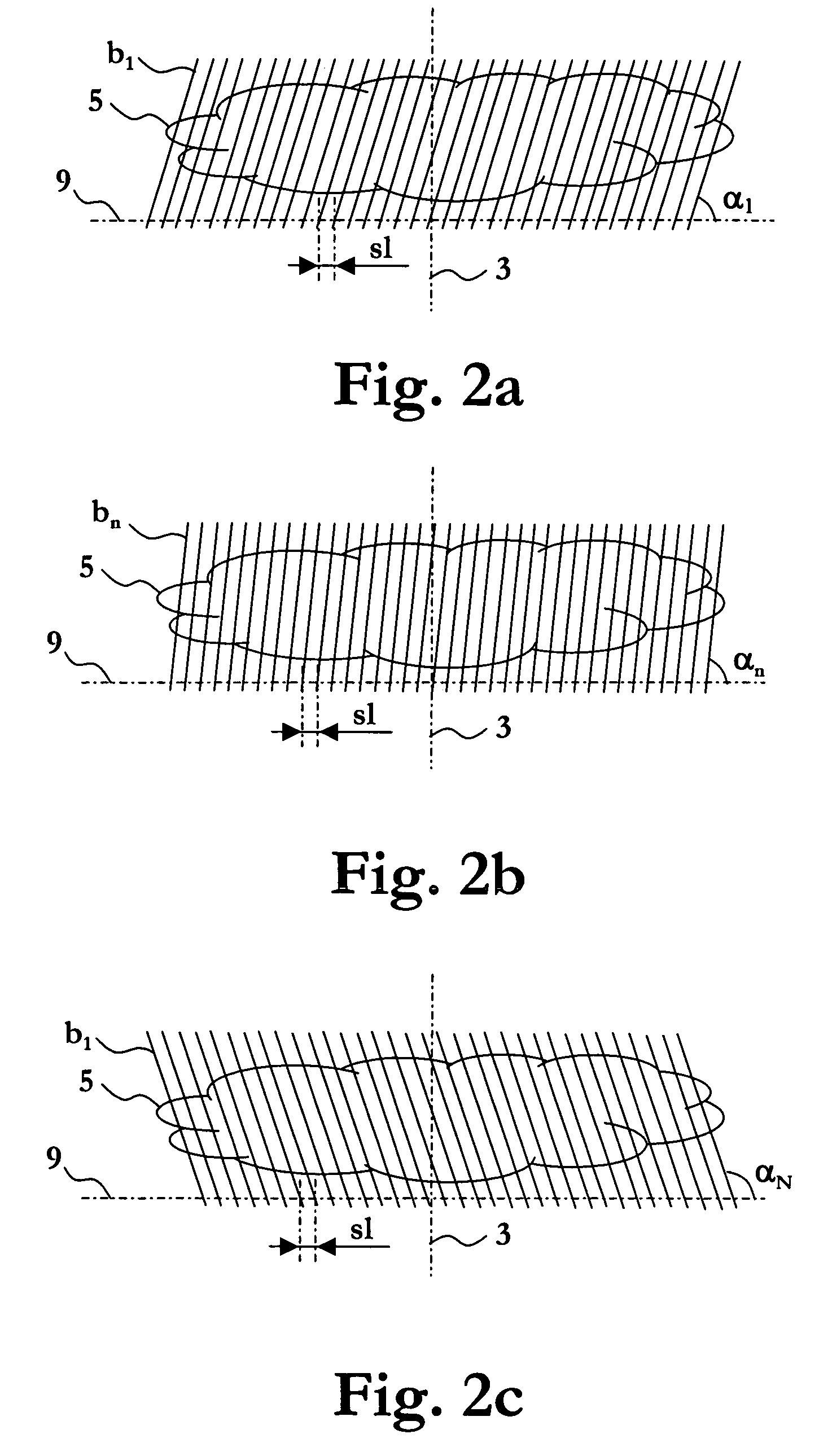Scanning-based detection of ionizing radiation for tomosynthesis
a technology of ionizing radiation and tomosynthesis, which is applied in the field of scanning-based apparatuses, can solve the problems of time-consuming tomosynthesis, and the plurality of images that have to be acquired at different angles, and achieves high spatial resolution, high signal-to-noise ratio, and high dynamic range
- Summary
- Abstract
- Description
- Claims
- Application Information
AI Technical Summary
Benefits of technology
Problems solved by technology
Method used
Image
Examples
Embodiment Construction
[0023]The apparatus of FIG. 1 comprises a divergent X-ray source 1, which produces X-rays 2 centered around an axis of symmetry 3 (parallel with the z axis), a collimator 4, a radiation detector 6, and a device 7 for rigidly connecting the X-ray source 1, the collimator 4, and the radiation detector 6 to each other and moving the X-ray source 1, the collimator 4, and the radiation detector 6 essentially linearly in direction 8 (typically parallel with the x axis) essentially orthogonal to the axis of symmetry 3 to scan an object 5, which is to be examined.
[0024]The radiation detector 6 comprises a stack of line detectors 6a, each being directed towards the divergent radiation source 1 to allow a respective ray bundle b1, . . . , bn, . . . , bN of the radiation 2 that propagates in a respective one of a plurality of different angles αl, . . . , αn, . . . , αN with respect to the front surface of the radiation detector 6 to enter the respective line detector 6a. The line detectors 6a ...
PUM
| Property | Measurement | Unit |
|---|---|---|
| angles | aaaaa | aaaaa |
| angles | aaaaa | aaaaa |
| angles | aaaaa | aaaaa |
Abstract
Description
Claims
Application Information
 Login to View More
Login to View More - R&D
- Intellectual Property
- Life Sciences
- Materials
- Tech Scout
- Unparalleled Data Quality
- Higher Quality Content
- 60% Fewer Hallucinations
Browse by: Latest US Patents, China's latest patents, Technical Efficacy Thesaurus, Application Domain, Technology Topic, Popular Technical Reports.
© 2025 PatSnap. All rights reserved.Legal|Privacy policy|Modern Slavery Act Transparency Statement|Sitemap|About US| Contact US: help@patsnap.com



